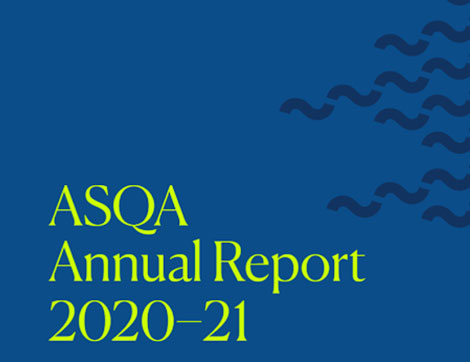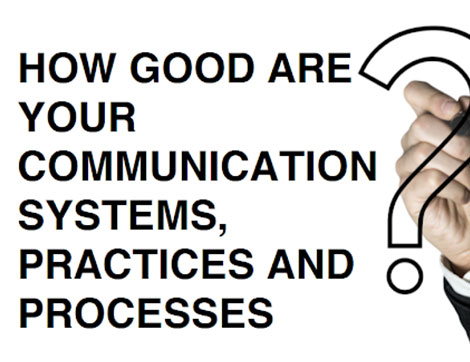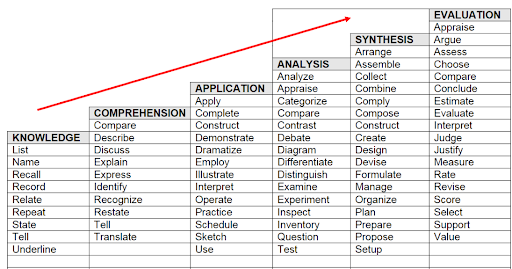The training industry is growing rapidly due to the growth in businesses requiring a skilled workforce. Training businesses are however operating in a highly competitive market where they have to keep up with the changing needs of their customers and need to make profits in order to survive and be sustainable.
There are multiple ways to become a profitable training business, but not all of them are easy. For example, you can create your own niche market and offer one-of-a-kind solutions that people want to purchase from you instead of going with a larger competitor. In this article, we will look at some of these strategies and also discuss the process of how your business can become a successful training organisation.
There are many factors to consider for any training organisation that wants to remain profitable such as:
- What are your ethics and values? Why are you operating as a training business?
- How do you ensure you deliver high-quality learning?
- What are the applicable compliance and regulatory requirements and how do you confirm with them?
Training is one an important service and it has been changing more rapidly than ever before with the emergence of new technologies and innovations.
Training organisations have to be profitable to remain registered. They must keep their costs down to balance their income (student fees or government funding) and at the same time maintain their competitive advantage in the market and not price themselves out. In this article we present twenty strategies that you can use in order to become a profitable training business:
1. Set the criteria: What do you consider to be a profitable business?
One of the best and most important things that a training business can do is to establish its profitability. This is one of the first steps before you take any other step for your training business.
You can consider a few factors for this: customer retention, customer satisfaction, and cost. The first factor deals with your ability to keep your customers happy and satisfied with what you offer them. The second deals with how much it costs for you to provide your service. The last factor deals with strategies to maximize the profits from what you do offer.
2. Have a comprehensive plan of action
In order to become a profitable training business, you need to have a plan. This plan should start with the right idea and what you want to be known for. You must set goals that will help you achieve those ideas.
Make sure that all your plans include delivering high-quality services and your clients will come back for more or promote your business to all people in their networks, communities and groups.
In the plan of action, you should include the following strategies:
- Knowledge strategy – How you will add knowledge or expertise to your services
- Value strategy – How you will provide clients with value
- Experience strategy – How you will deliver the experience
- Cost strategy – How much will this cost and how will you ensure the costs are kept at the planned level?
- Marketing strategy – Where to market and why market there? How will you find a niche market? The right price point and so on
- Thinking outside the box strategy – Will there be opportunities to generate revenue from additional sources?
- Providing customer acquisition strategy
- Retention strategy – How you will ensure that your clients stay with you
- Revenue generation strategy – How you will generate the income that will cover your costs. Should include a best-case and worst-case scenario.
3. Understanding the concept of what, why, and how
A training company has to know what it is doing and why they do it in order to make sure they are profitable. This is why the concept of what, why, and how.
1) What: The organisations should know their audience and what they want to achieve with their training. They must identify the skills, experiences and information that make sense for that audience. They must understand what the target audience needs from them. Not having a well-defined target market is one of the main reasons why businesses fail.
2) Why: The organisation must have a solid reason for being a training business. It could be because they have a passion for helping people succeed, they want to help build impactful careers or they enjoy being part of a community that supports learners. If you do not have a mission, vision or objectives then the process to become a successful organisation can be an uphill battle. You also need to have a clear definition of what you want to achieve with the service so that you can find people who are likely to benefit from your service.
3) How: When it comes to how training organisations meet and exceed the needs and requirements of their clients they should focus on what they consider as a quality service, how this quality service can be promoted and how it can be delivered to the clients. For example, interactive classroom-based face-to-face interaction is one way of delivering content but not everyone can attend training through this medium.
4. Offering value-added services
Training companies can succeed in the market and become profitable by providing training services with value-based solutions.
Training businesses that are profitable can be achieved by:
- understanding the training industry,
- planning for the future,
- learning from the past, and
- having a good business model.
This includes understanding the state of the industry – what it looks like now and how it may change in the future – as well as planning for the changes.
Training businesses can profit by carefully studying their customers’ needs, keeping them updated with the latest training trends, and adapting their products according to what is in demand.
5. Providing clients with needed skills
Training businesses should aim to create a long-term relationship with their clients and offer them exactly what they need for their businesses or personal and professional growth.
The key is to stay flexible and always be able to adapt your approach as your clients’ needs change over time. This will help you grow and scale your business as your customer base grows larger.
Training businesses must ensure that they provide high-quality services that lead to tangible results in the long term. The goal of any training business is always centred around helping its clients succeed in their respective industries – whether that’s better customer service, use of effective technologies, tools or systems or improvements in the processes, procedures and practices.
6. Offering cost-effective solutions
When are you planning cost-effective solutions, you should focus on the following main points:
- What to do when the training business has an existing customer base that it wants to retain and grow
- What to do when the training business has no customers, and it wants to grow in a niche market
Your strategies will of course differ under both of these circumstances. When it comes to an existing customer base, you can influence them by loyalty discounts, offering better services, adding more value and so on. However, for the new customer base, you may focus on attractive marketing and advertising, good communication protocols, offering a lower-cost solution etc.
Some other strategies to be cost-effective:
- Offer training services that are out of the box, unique and in demand by the market. This will make you stand out from your competitors and generate revenue opportunities.
- Offer an upsell of a product or service after a course is completed. This will encourage more students to complete your course, which ultimately increases your revenue opportunities
- Promote your courses at a discounted price through marketing channels like Facebook ads, Google Adwords etc., this strategy is very cost-effective but it requires you to be good with marketing
As a training organisation you should focus on:
- Offer new products or services at a cost that is competitive
- Investigate and keep an eye on your costs and use and use new technology or new practices that can be implemented without reducing the quality of services
- Invest in R&D to come up with the next cutting-edge technology
- Understand what your client wants and needs and deliver accordingly
It’s important to offer cost-effective solutions in order to attract more customers and maintain customer satisfaction levels.
7. Understand your market and focus on building a large network of clients
Understand your audience and why they need your services. If you’re trying to sell something that is different from what’s already out there, then your business has an advantage but if it is selling something that is already in the market sold by a number of your competitors, you need to plan why your services are comparable, competitive, and better.
Some strategies can include using proven methods of training that have proven results for a similar market sector or niche. Use authentic testimonials or client references on your website or page profile page to increase the trust factor with potential clients.
8. Value your staff members
It is important to have the right staff members who have the right skill set to be successful.
When it comes to training, you should never underestimate the value of your staff members. Always remember they are the first point of contact for your clients.
A happy staff member will ultimately support you in building great relationships with clients in the industry.
The strategies that training businesses use could include:
– Paying a competitive salary
– Offering flexibility in schedules
– Providing opportunities for personal growth
– Creating a positive culture
Businesses that consider their staff members as equals, well-paid and hardworking employees also tend to outperform others in the market.
According to a Gallup study, organisations with engaged employees have a 30% higher chance of being profitable than those with disengaged employees. Engagement means that the staff feels like they are valued and respected by their employer and that they can grow professionally.
9. Manage your team effectively
The training industry is becoming more competitive, and organisations are looking for ways to keep up with the changing landscape.
To be profitable, training businesses should focus on building an effective team by hiring good people and managing them well. The rest will follow suit as long as you’re willing to put in the work.
We all know that training organisations have a huge amount of work to do, and because of the sheer number of tasks at hand, it’s easy to get overwhelmed. If you can dedicate a little more time and energy to managing your team, you’ll be able to keep the focus on what really matters – your business. In order to be successful in the training business, you need to have a well-managed team that is continually learning.
10. Assess your systems, processes, and practices on a regular basis
There are many ways to assess the effectiveness of all processes, practices and systems. One of them is through ongoing, systematic audits and evaluations. It helps to identify what needs to be improved and accordingly improve processes and systems.
How?
The audit provides a comprehensive overview of current operations, identifies areas that need improvement, and lays out the strategies for success.
When?
The audit usually takes place at regular intervals such as yearly or quarterly which helps organisations streamline their operations by identifying changes to be made before they become constantly or non-compliant.
What are the strategies?
Organisations can implement new strategies such as outsourcing some processes or implementing stronger process management in order to increase the profitability of their training business.
Having external RTO consultants such as CAQA (Compliance and Quality Assurance) can help training organisations identify areas where they can make more money by following best practices, providing new ideas for growth, and ensuring that all investment is being put to efficient use.
Audits may be done on financial impact (cost), profitability (income), customer satisfaction (revenue), resource allocation efficiency and so on.
11. Continuous improvement
For a training organisation to be profitable, it needs to constantly improve its service.
This means that they need to make sure that their business stays relevant in terms of technology, knowledge, staffing and compliance, to the learners.
Training organisations need to figure out which strategy they should implement first in order to follow an effective continuous improvement process. There are two strategies for this:
– A strategy of major change – by implementing this type of strategy, organisations will need to identify a major area that needs large scale improvements and improve this before moving on with the rest of the organisation.
– A strategy of incremental change – by implementing this type of strategy, organisations aim at making small improvements to current business processes across all areas..
Training businesses are expected to continue to grow, but to do so sustainably. This will require them to continuously improve their services.
12. How strong is your compliance model?
It has come up rather frequently in conversations with clients who claim that they were so preoccupied with advertising their organisation that they lost sight of their compliance approach and processes. Nevertheless, they fail to recognise that if they have flaws with their compliance and regulatory processes, they run the risk of losing all or a significant portion of their business.
Compliance models must be appropriately created and designed in order to avoid issues that could have a negative impact on the future of the training organisation.
When it comes to how they handle their compliance approach, the training organisation must exercise due diligence.
It is critical to have high standards in all elements of your training and education business if you want to build a successful compliance model for your organisation. It is possible to do this by establishing clear policies and adhering to them on a consistent basis.
There are numerous approaches that can be used to address the problem. One of them is to hire people who are experienced and highly qualified and to provide them with excellent training. In order to achieve compliance and trust among your staff and students, it is necessary to establish a culture of compliance and trust.
A solid training course is only part of the equation; building the correct culture within your organisation can help you build trust with not only learners but also the regulatory body, which in turn will lead to better training outcomes.
13. Industry consultation – speak to industry representatives
Industry consultation is a process in the VET context where a registered training organisation reaches out to the industry to learn about current industry practices and processes. This ensures that the information and learning that students receive is what is currently used in the industry. It is important for RTO’s because it helps them gain valuable insights into what needs to be done in order to provide excellence in training and build valuable industry connections.
14. Diversify your scope
Researching the job market and industry trends is an important part of making sure that the training offerings match the requirements of industries that require a workforce with the skills necessary to keep up with the rapidly changing work environments. Training and education organisations need to find ways to serve existing clients and to reach new emerging audiences.
Finding new training opportunities is one of the most important aspects of building a successful training organisation. This includes not only adding new training products such as courses, skill sets and units of competency on the scope of registration, creating new content or delivering the training through different delivery modes but also ensuring that you are doing things differently than other training organisations in your area.
15. Do not put all your eggs in one basket
The training business is a competitive market. It is important to have strategies in place to ensure that you are not putting all your eggs in one basket. This strategy will help you succeed through the ups and downs of the business cycle.
It is important to have multiple streams of income when operating a training business because you could potentially lose one. If that happens, your other streams will help you to sustain your business. For example, during the pandemic the training organisations offering courses to only the international students really struggled, many of them stopped running their businesses and some of them went into hibernation.
Therefore, as a training and education business, focus on:
- Markets (domestic and international)
- Variation in training delivery that will suit different student cohorts
- Non-accredited training courses offered to industry
- Differentiating yourself from your competitors
- Ensuring flexibility with changing customer demands
- Managing risk by diversifying offerings
- Researching state and federal funding opportunities to support skill needs
16. Training and assessment through different delivery modes
Training and assessment through different delivery modes are important for a number of reasons.
One of them is that it can allow the RTO to provide quality training to more people, which the organisation can then market as a key part of their service.
Another reason why companies need to have this option is that it allows them to deliver training to meet the needs and requirements of different learner cohorts.
17. Use effective marketing methods and techniques
What makes a training organisation profitable?
The answer is simple. Effective marketing methods and techniques. In order to be successful in marketing, you need to have a clear understanding of what drives people’s decision-making process, which is more often than not based on emotions.
The marketing methods and techniques include the use of social media, email marketing, SEO, and other digital marketing tactics.
Training organisations should not only focus on selling courses but instead on selling themselves to potential customers.
You must conduct comprehensive market research and include the following parameters:
- Who are your competitors?
- What are your organisation’s strengths/weaknesses?
- What is your target audience?
- How do they feel about what you offer?
- Is there any competitor that’s more suitable for what your target audience wants than what you are offering?
- How will you differentiate yourself from your competitors?
- What strategies will you use to keep up with new trends in the industry and stay ahead of the curve?
Market research will assist you in a number of ways, including:
- Investing in effective marketing tools that will increase the number of potential students.
- Investing in building brand awareness for your training service or product.
- Developing a clear strategy for your business such as using social media to get the word out about your training service or product.
18. Business development representatives
Business development representatives are responsible for the success of the business through three key areas:
– Prospecting/ generating leads
– Attracting new customers / converting the leads into clients
– Retaining existing customers
The reasons why organisations should engage business development representatives are as follows:
– Business development representatives can engage with prospective clients and bring them into the organisation’s ecosystem. They also help connect an organisation with potential partners who can provide win-win solutions for both parties.
– Business development representatives help to generate revenue, grow the customer base, and retain the existing customer base. They can provide a variety of services such as content marketing, product marketing, and business development activities.
19. Use third-party websites for marketing
Many organisations are finally realising the value of marketing training courses through third-party websites. However, you as a training organisation must ensure that the third party meets all regulatory and legislative requirements and guidelines.
20. Partnering with other organisations
A training organisation must have relationships with key players in the industry to be successful. In order to create strong relationships with key players in the industry, start by getting involved in conversations early.
Some strategies to create strong partnerships with key players in the industry are:
- partnering with companies that are already leading in their industry
- partnering with companies that are potential new entrants into the industry
- developing relationships with current stakeholders of the training business
- Staying connected with on social media, and approaching through other means (such as referrals and cold calls)
- Building relationships at events like conferences, training events or even social gatherings.
- Developing specialised training programs for specific industries, which can lead to increased demand and revenue generation and offering special pricing or discounts that only members of the target industry will be able to access.
- Working on establishing long-term relationships that will remain strong.
- Focusing on achieving measurable performance objectives as well as engagement metrics for your clients as well as yourself. – Create clear project plans and milestones that align with company objectives and provide opportunities for both parties to measure progress towards those goals.
You may be asking as to how we might assist you with business development, business analysis, risk management, auditing and regulatory compliance consulting. Contact us by email at info@caqa.com.au.





















